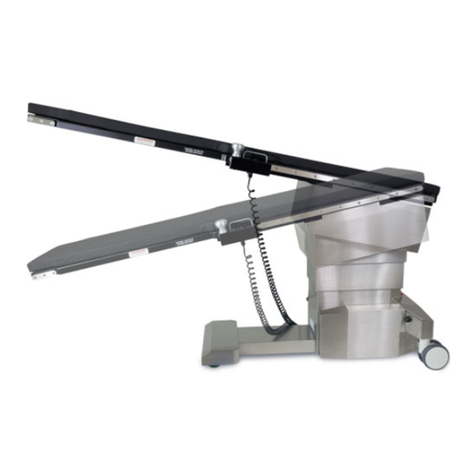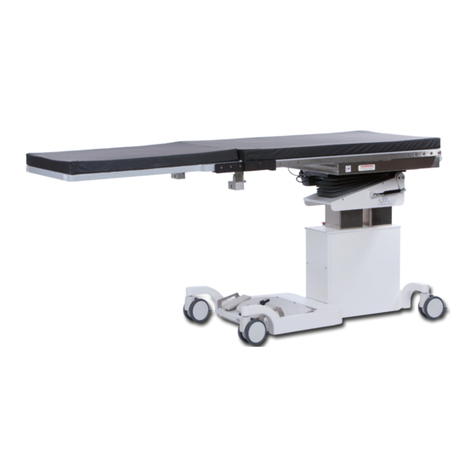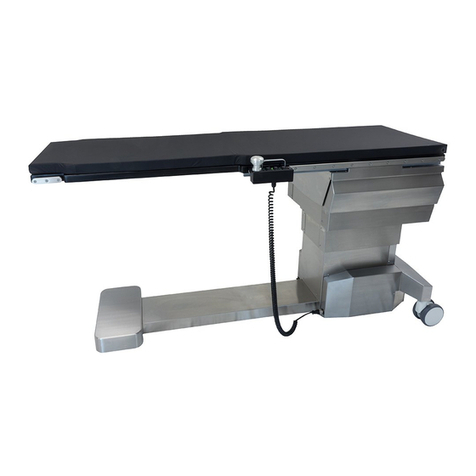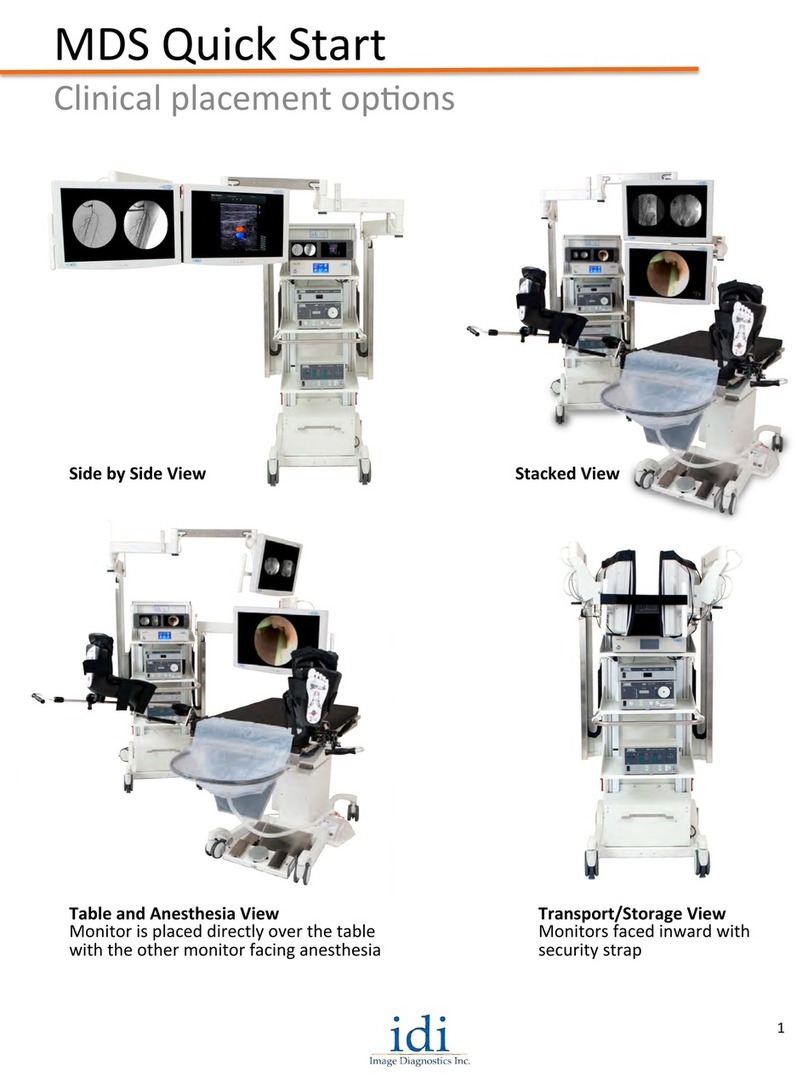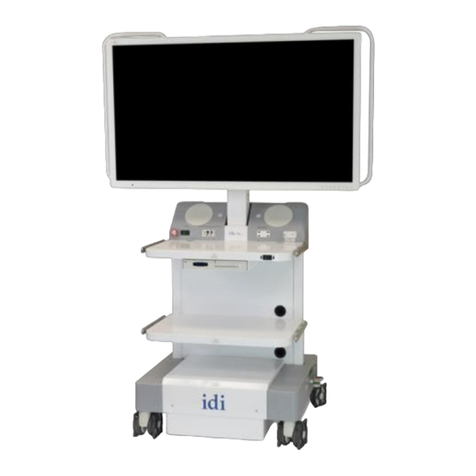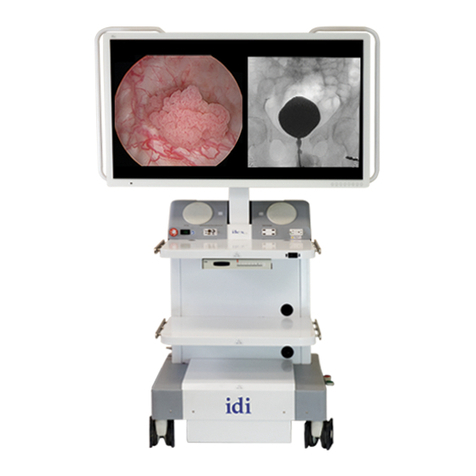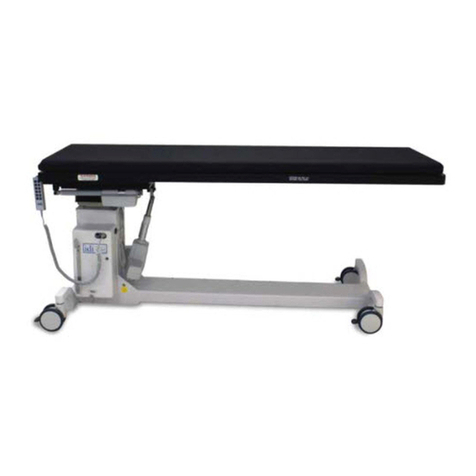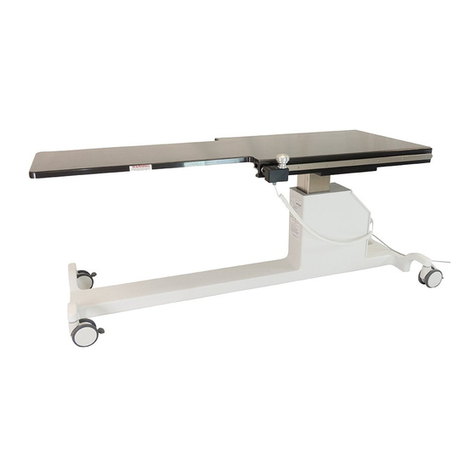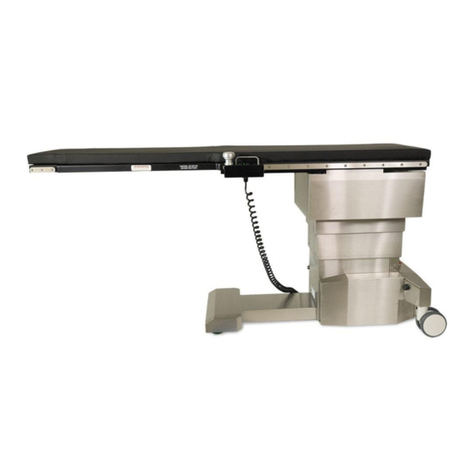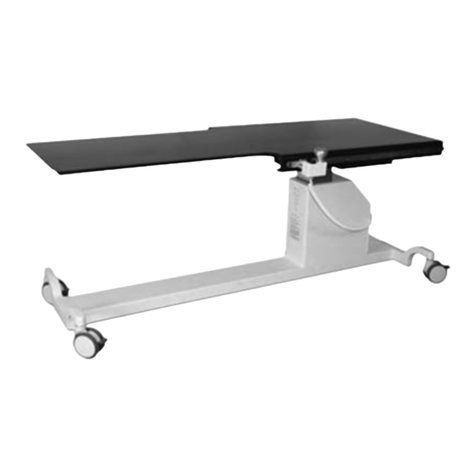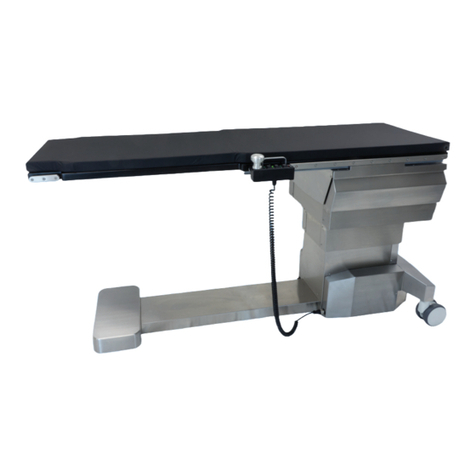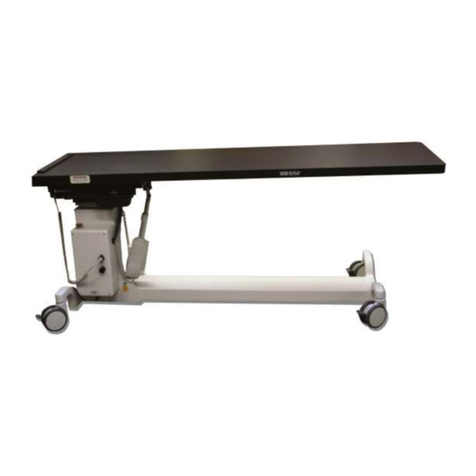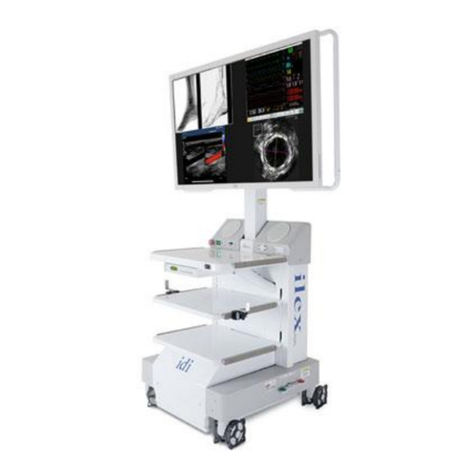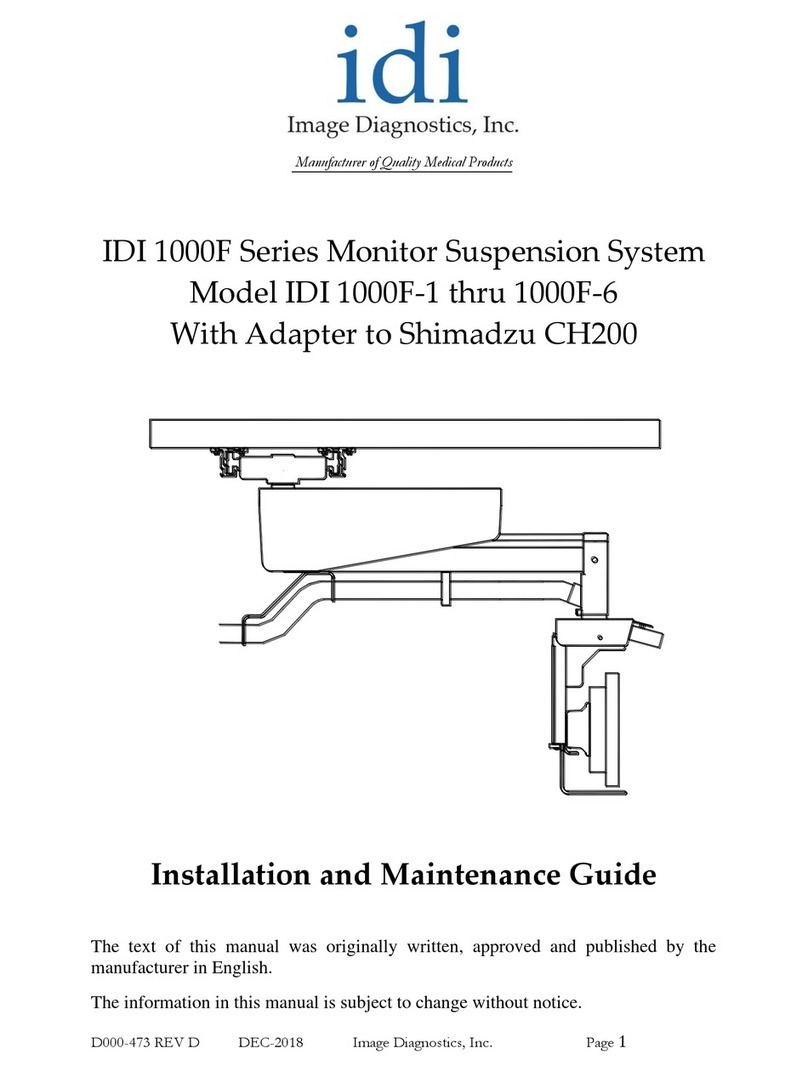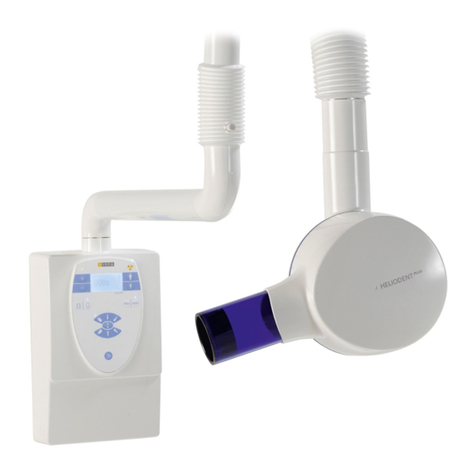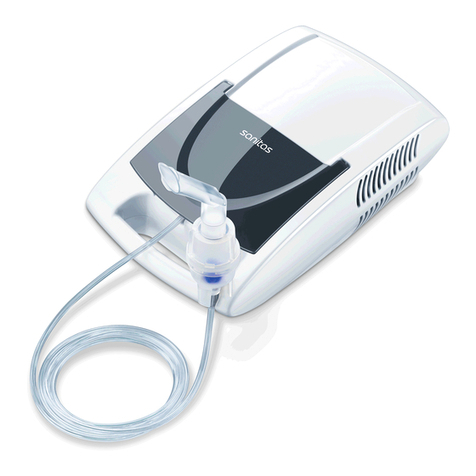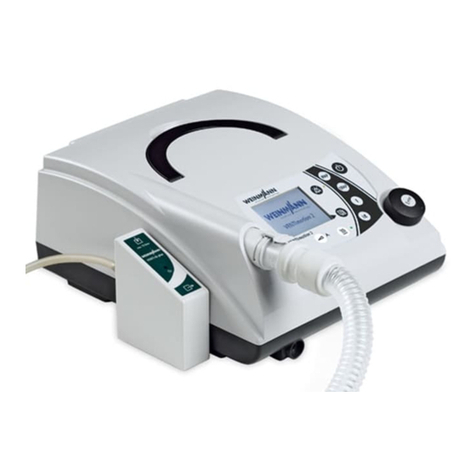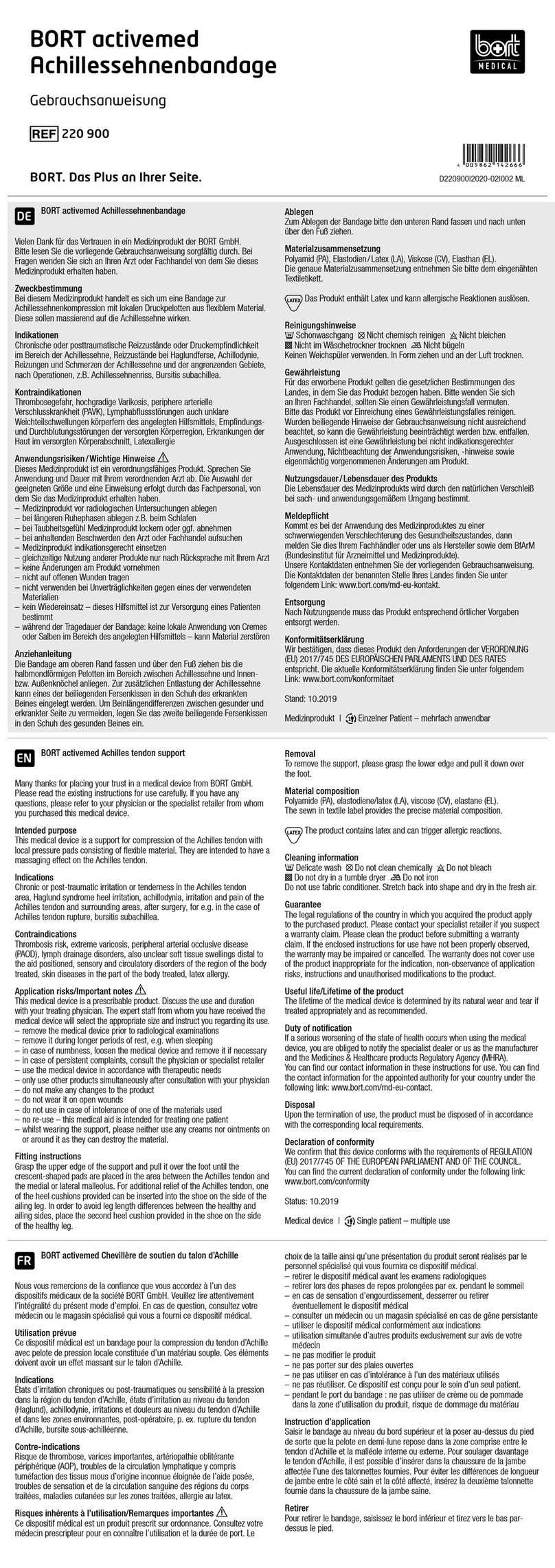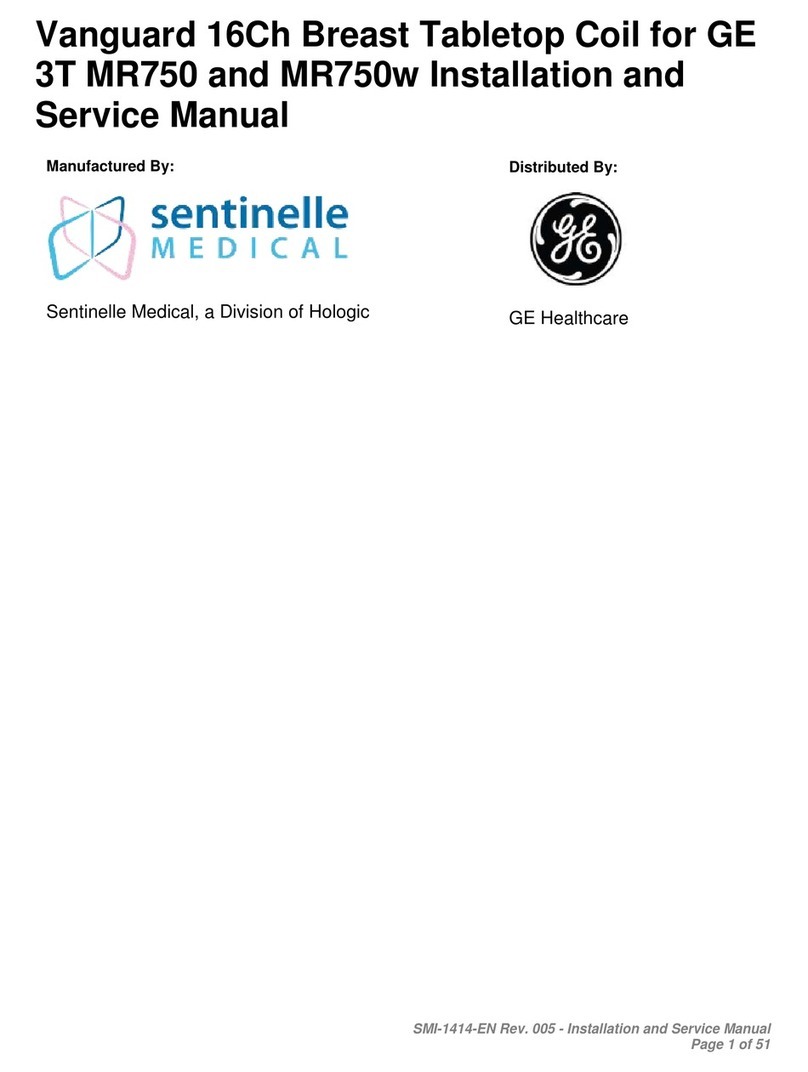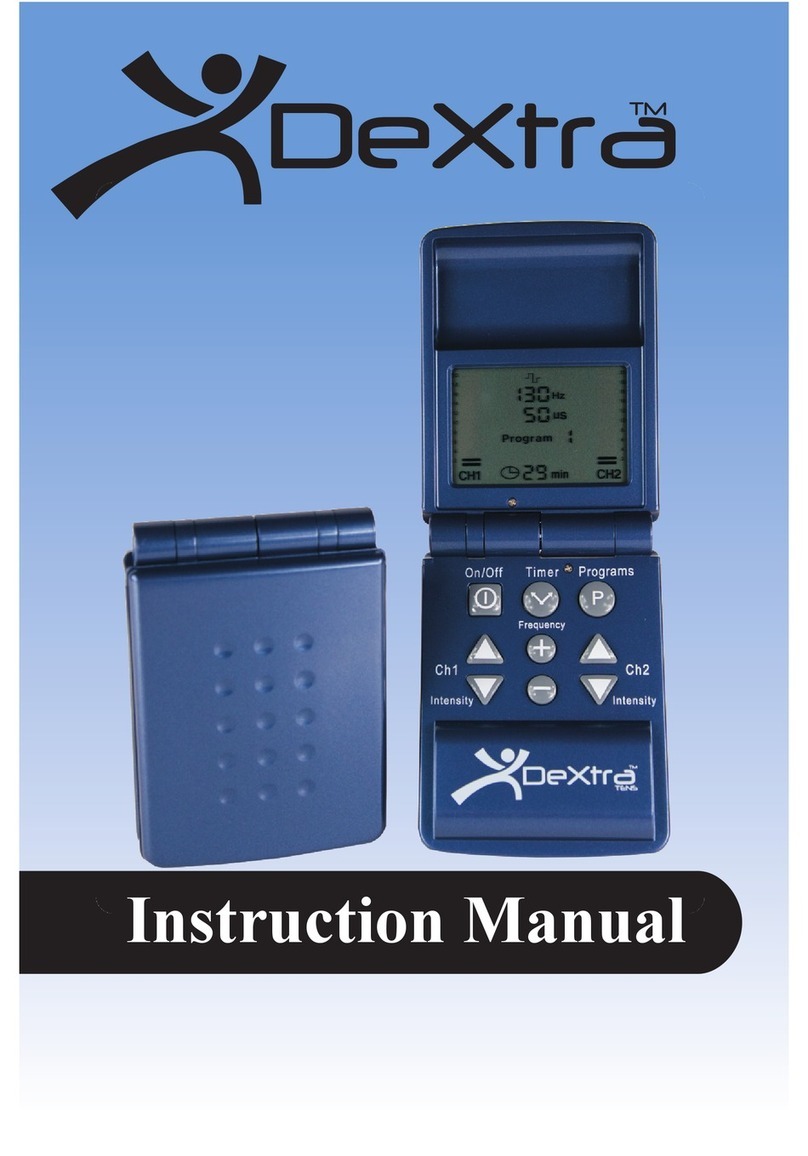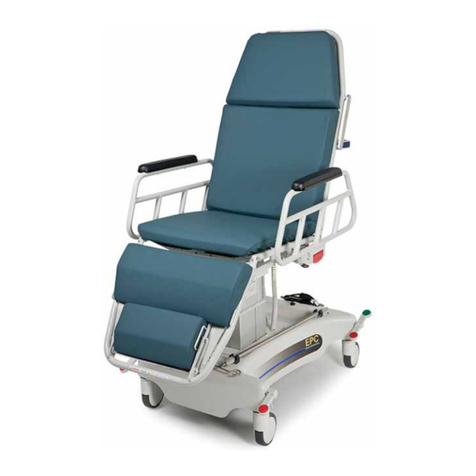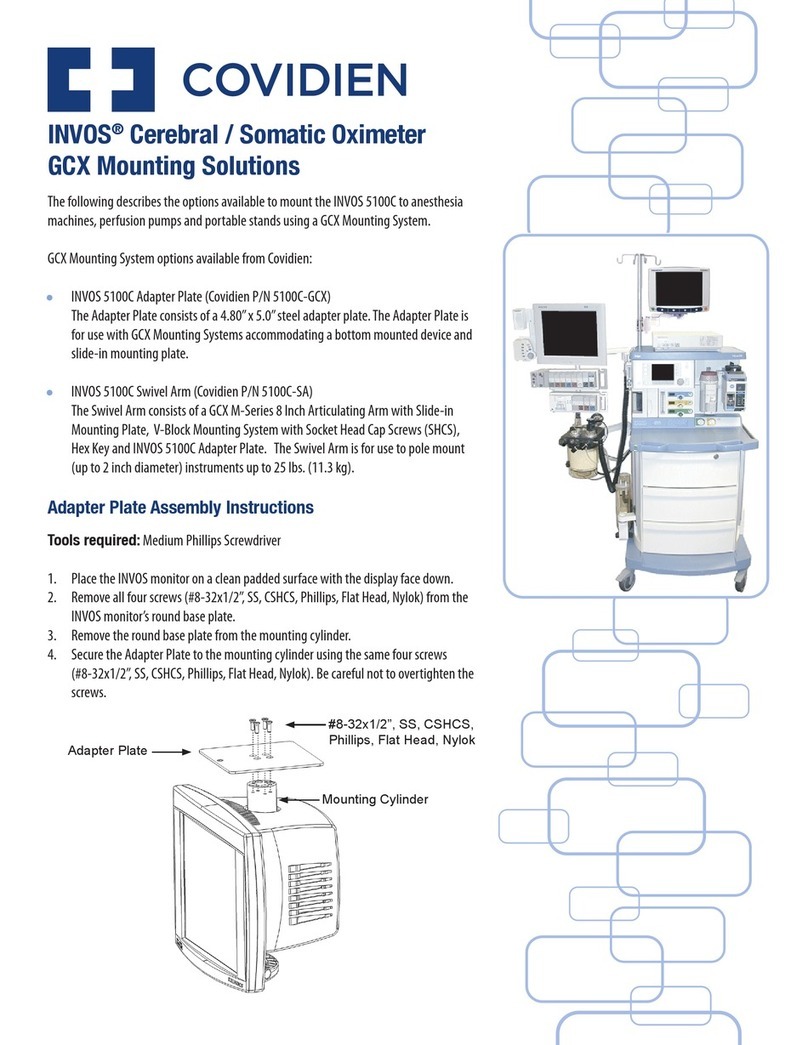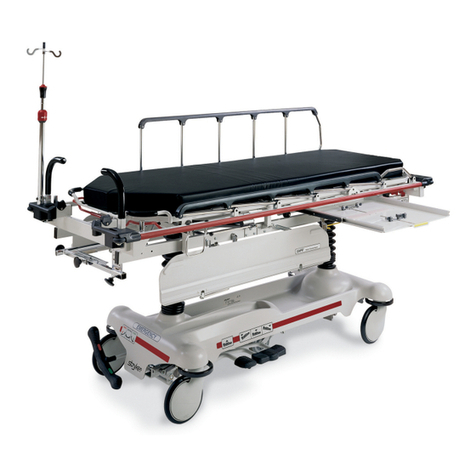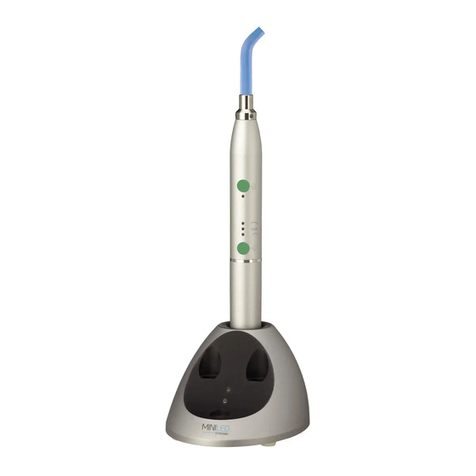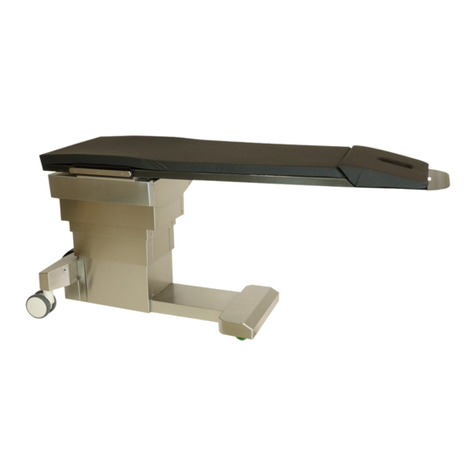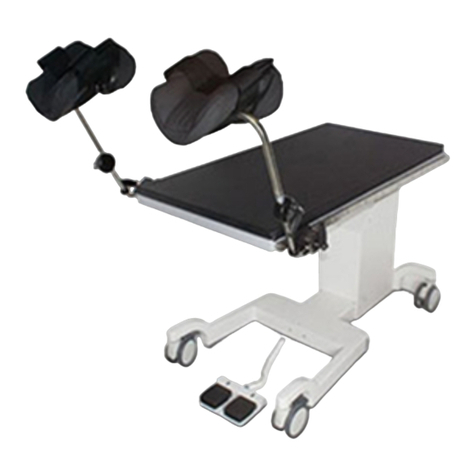
Installation Guide ilex
L280-0974 REV C www.imagediagnostics.com Page 11
K5902133 (451920612483)-02 MDSC-8255
26
Overview of shortkeys
Image 4-3
1. Main source selection
2. Brightness decrease
3. Brightness increase
4.5.1 Main source selection
To quickly select the main source
Press the key to scroll through all the possible input signals and quickly select the main source.
Available main source options may differ depending on display model.
To avoid unwanted or accidental activation of any function through the keyboard all keys,except the
Power On/Off, can be locked using a dedicated OSD Menu function (see “Control lock: OSD menu
locking/unlocking”, page 26).
4.5.2 Brightness adjustment
To quickly adjust the brightness
While no OSD menu is on the screen, press the or key to adjust the brightness as desired.
Image 4-4
4.6 Control lock: OSD menu locking/unlocking
About the OSD lock
As described in “OSD lock”, page 40, the OSD lock can be enabled to avoid unwanted access. When the OSD
is locked, pressing the key after unlocking the keyboard will not activate the OSD menu, but will make the
OSD lock window appear. The OSD menu can only be accessed after pressing a sequence of keys.
OSDlock
Sequence:5 -6 - 6 - 3
Image 4-5
To lock/unlock the menu
When the OSD lock window appears, press the following key sequence to unlock the OSD menu:
Daily operation
K5902133 (451920612483)-02 MDSC-8255
26
Overview of shortkeys
Image 4-3
1. Main source selection
2. Brightness decrease
3. Brightness increase
4.5.1 Main source selection
To quickly select the main source
Press the key to scroll through all the possible input signals and quickly select the main source.
Available main source options may differ depending on display model.
To avoid unwanted or accidental activation of any function through the keyboard all keys,except the
Power On/Off, can be locked using a dedicated OSD Menu function (see “Control lock: OSD menu
locking/unlocking”, page 26).
4.5.2 Brightness adjustment
To quickly adjust the brightness
While no OSD menu is on the screen, press the or key to adjust the brightness as desired.
Image 4-4
4.6 Control lock: OSD menu locking/unlocking
About the OSD lock
As described in “OSD lock”, page 40, the OSD lock can be enabled to avoid unwanted access. When the OSD
is locked, pressing the key after unlocking the keyboard will not activate the OSD menu, but will make the
OSD lock window appear. The OSD menu can only be accessed after pressing a sequence of keys.
OSDlock
Sequence:5 - 6 - 6 -3
Image 4-5
To lock/unlock the menu
When the OSD lock window appears, press the following key sequence to unlock the OSD menu:
Daily operation
K5902133 (451920612483)-02 MDSC-8255 31
5.1.4 Saturation
To adjust the saturation level
1. Bring up the OSD main menu.
2. Navigate to the Picture menu.
3. Enter the Saturation submenu.
The command bar Saturation is highlighted.
4. Set the saturation level as desired and confirm.
5.1.5 Color temperature
About color temperature presets
The available color temperature presets for your display are:
•5600K
•6500K
•7600K
•9300K
•Native
•User
Factory calibration –White point:
The White Color points associated with the Color Temperature: 5600K, 6500K, 7600K or 9300K are
factory calibrated with a consequent reduction of the maximum luminance compared to Native
Color Temperature.
Only in case the User preset has been selected it is possible to get access to the color regulation
commands to adjust the gain and offset of red, green and blue primary colors.
To select a color temperature preset
1. Bring up the OSD main menu.
2. Navigate to the Picture menu.
3. Enter the Color Temperature submenu.
4. Select one of the available color temperature presets and confirm.
If you selected the User color temperature preset, a new menu will be displayed allowing you to
manually adjust the gain and offset of red, green and blue.
5.1.6 Color space
About color space presets
The available color space presets for your display are:
•Native (LCD primaries uncalibrated)
•ITU709
•BT.2020
•DCI-P3 D65
Factory calibration –Color space:
RGB primary calibration, according to the selected standard, is performed within the physical
limitation of the LCD panel used.
To select a color space preset
1. Bring up the OSD main menu.
2. Navigate to the Picture menu.
3. Enter the Color Space submenu.
Advanced operation
K5902133 (451920612483)-02 MDSC-8255
32
4. Select one of the available color space presets and confirm.
5.1.7 Gamma
About gamma presets
The available gamma presets for your display are:
•1.8
•2.2
•2.4
•Video (transfer function adapted for video cameras with dark levels enhancement)
•Native (no correction curve is applied)
•DICOM (grayscale levels are following closely the DICOM curve –for reference only, not for diagnostic
purposes)
To select a gamma preset
1. Bring up the OSD main menu.
2. Navigate to the Picture menu.
3. Enter the Gamma submenu.
4. Select one of the available gamma presets and confirm.
5.1.8 Sharpness
To adjust the sharpness level
1. Bring up the OSD main menu.
2. Navigate to the Picture menu.
3. Enter the Sharpness submenu.
The command bar Sharpness is highlighted.
4. Set the sharpness level as desired and confirm.
Sharpness control is not available when DisplayPort mode DP 1.1 dual is selected (see
“DisplayPort mode”, page 35).
5.2 Picture advanced menu
5.2.1 Black Level
About black level
This command allows to add or subtract an offset to the input video signal (available only on video formats).
To adjust the black level
1. Bring up the OSD main menu.
2. Navigate to the Picture advanced menu.
3. Enter the Black Level submenu.
The command bar Black Level is highlighted.
4. Set the black level as desired and confirm.
5.2.2 Latency
About latency
The video latency is defined as the delay between the time of a monitor input video transition to the
corresponding light output transition on screen.
Advanced operation
Older RGB color Settings
Newer UHD Color Setting
Newer Digital Movie Color Space












